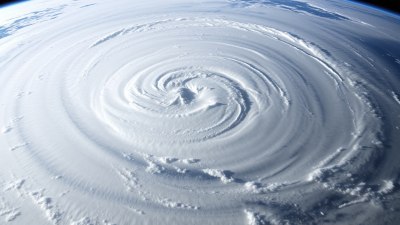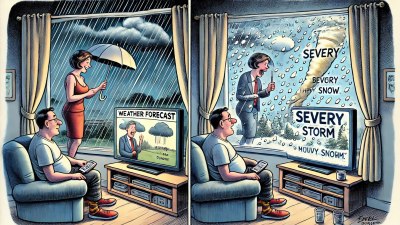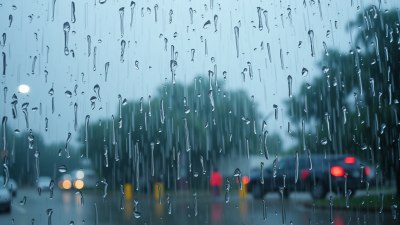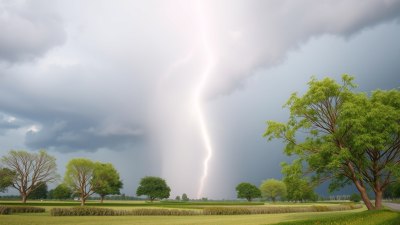How to Guess the Weather Without Checking Your Phone
Learn practical tips to predict the weather using natural signs and observations, no smartphone needed.

Image by gpointstudio on Freepik
Understanding how to predict the weather without a smartphone can be a valuable skill, especially when you find yourself outdoors without access to technology. Many traditional methods can help you gauge the upcoming weather based on observation and natural signs. The ability to read these cues can not only provide insight into immediate weather changes but also enhance your appreciation for the environment around you. In this article, we explore various techniques and signs that can help you guess the weather effectively.
1. Observing Cloud Patterns
Clouds play a significant role in indicating weather changes. Their type, color, and movement can give clues about what to expect. For instance, thin, wispy cirrus clouds often suggest that fair weather is on the horizon, but they can also signal an approaching warm front. In contrast, towering cumulonimbus clouds are typical indicators of thunderstorms, heavy rain, or severe weather, as their formation is associated with unstable atmospheric conditions.
2. Watching Animal Behavior
Animals, including birds, can act as natural indicators of weather changes. For example, if you notice that birds are flying low or congregating in large numbers, it may signify that a storm is approaching. Additionally, certain animals may exhibit unusual behavior, such as staying close to their burrows or dens when they sense a shift in weather, serving as an early warning system of impending rain or severe weather.
3. Temperature Changes
Changes in temperature can also serve as significant indicators of upcoming weather. When you feel a drop in temperature, especially in the late afternoon or evening, it can suggest that a cold front is moving in. Conversely, a sudden rise in temperature can indicate an approaching warm front or the likelihood of storms. Pay attention to how quickly temperature changes occur, as rapid fluctuations often accompany shifting weather patterns.
4. Wind Direction and Strength
The wind is another crucial factor in predicting the weather. When the wind comes from the east, it typically brings more precipitation, especially in the United States. Conversely, a change in wind direction to the south or southwest often signifies warmer temperatures and clearer skies. Additionally, stronger winds can suggest that a storm is forming or moving into the area. Monitoring the wind can provide insights into both short- and long-term weather changes.
5. Analyzing Humidity Levels
Humidity can significantly influence weather conditions and is often felt in the air. High humidity levels often feel sticky and uncomfortable, indicating that rain may be on the way. If you notice that the air feels heavy, it could be a sign of moisture in the atmosphere, suggesting storms are imminent. On the other hand, low humidity usually signals drier and clearer weather.
6. Watching the Sun and Moon
The position and appearance of the sun and moon can also offer hints about the weather. A red sky in the morning indicates that moisture is moving in from the east, suggesting rain in the near future, while a red sky at night often means that fair weather is departing. Additionally, a halo around the moon can indicate that rain may arrive in the next 24 hours, as it often signifies moisture in the upper atmosphere.
7. Listening to the Atmosphere
Sometimes, listening can provide significant clues about the weather. Many people have noted that they can hear distant thunder before a storm arrives. Insects, too, can be a good signal; for example, if you notice fewer crickets or cicadas during the day, it can indicate changes in the weather. Additionally, the sound of the wind can reflect the intensity of approaching conditions, with a howling wind suggesting that a storm is brewing.
8. Observing Local Flora
Plants and trees can also react to changing weather patterns. For example, some flowers, like dandelions, tend to close their petals in response to increased moisture, suggesting that rain is on the way. Additionally, certain trees may release more sap as the temperature rises or falls, indicating changes in the weather. By observing these natural indicators, you can gain insight into upcoming conditions.
9. Barometric Pressure Changes
While not everyone has access to a barometer, you can often feel changes in air pressure. A sudden drop in pressure typically indicates that a storm system is approaching, while rising pressure usually signals fair weather. If you feel a change in how your ears pop or experience slight discomfort, it may be due to shifts in atmospheric pressure associated with weather changes.
10. The Old Wives' Tales
Throughout history, various proverbs and sayings have emerged as folk wisdom about predicting the weather. Common phrases such as “Red sky at night, sailor’s delight; red sky in morning, sailor’s warning” epitomize how generations have learned to observe nature and create rules of thumb. While not scientifically accurate, these sayings are often based on patterns observed over time and can still serve as useful guidelines for predicting weather.
Conclusion
Guessing the weather without a smartphone requires keen observation and an understanding of the environment. By becoming familiar with the signs provided by clouds, animals, temperature changes, wind, humidity, and local flora, you can develop a reliable sense of what the weather will be. This not only enhances your outdoor experiences but connects you with the natural world in an engaging way. With practice, you'll find that reading natural signs can become second nature, allowing you to walk outdoors equipped with an intuitive understanding of the weather.











